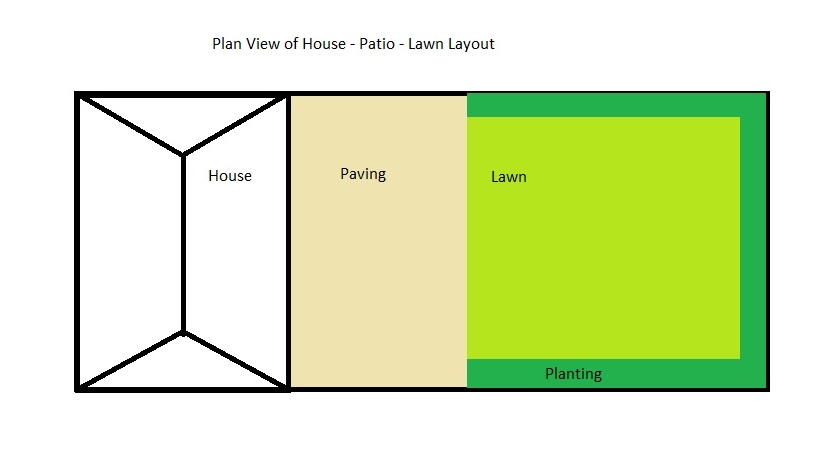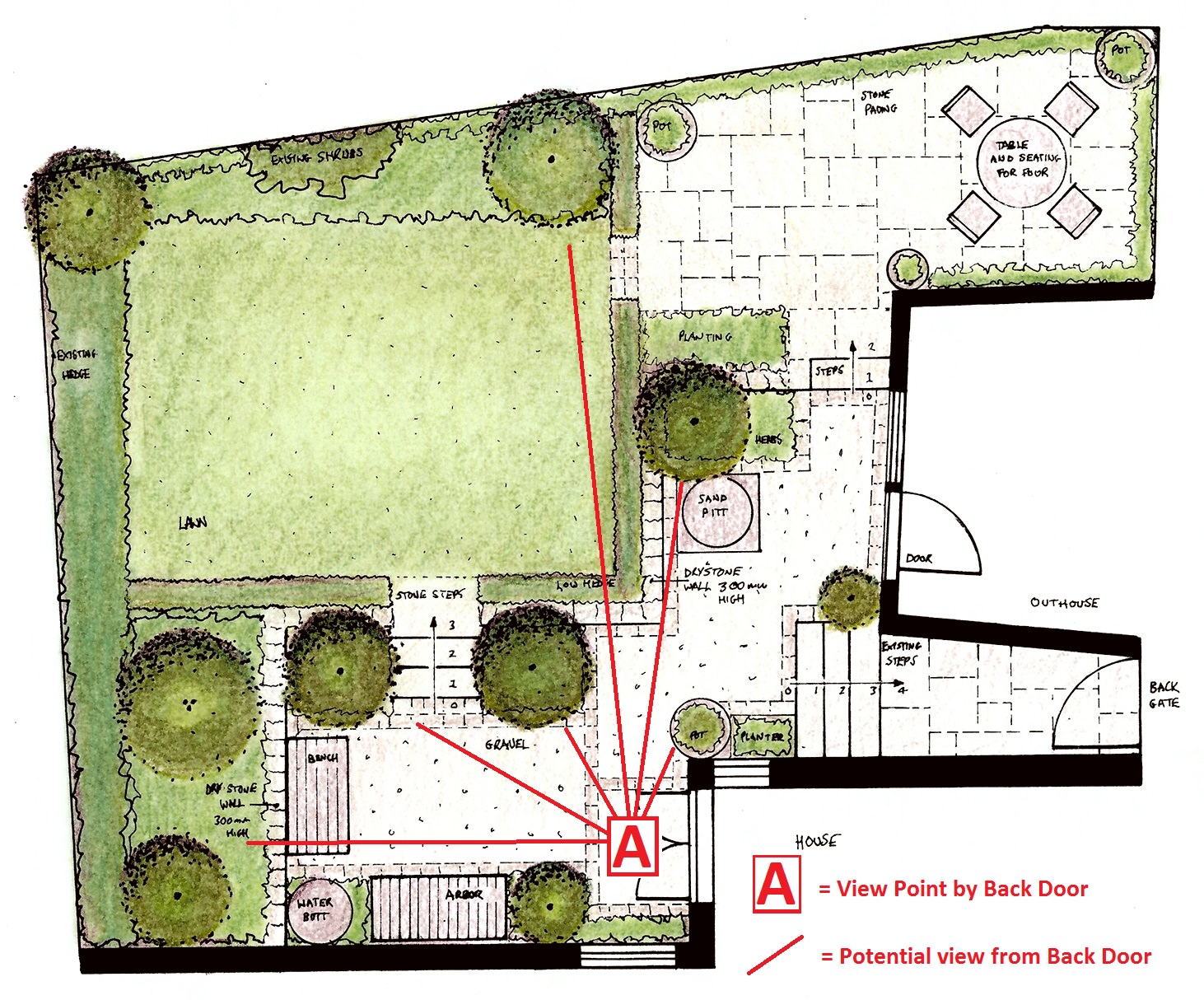This design focus feature looks at how we can make a garden more inviting and at the same time feel bigger by breaking down the views to the boundary. This is a simple technique which can be employed in even the smallest of gardens and can make a real difference to how the space feels.
Many people believe that to make the most of their outside spaces, particularly when it comes to small gardens, one should keep them as open as possible. Trees and plants are pushed right back against the boundary leaving a gaping open space of grass and patio in the middle. Or in the example above the grass simply goes right up to the boundary hedge with no disguise whatsoever.
In my blog feature ‘Is your House too Hard for Your Garden’. I used the potentially troublesome garden layout that I described as: House – Patio – Lawn. This standard layout that is repeated in gardens up and down the country, usually there by default rather than any specific intention, is a prime culprit. In this situation one can often stand in the back door of the property and see the whole garden without having to venture into it. The view leaves no question as to the size of the garden, as you can clearly see the entire boundary. You also have no reason to go into the space and explore, as the whole thing is laid out before you like a two dimensional image.

Of course, this may be what you are looking for, particularly if you own great swathes of land and like to spend your time standing and surveying your kingdom. However, I would suggest in any landscape, big or small, a better solution is to break the view by bringing additional height and presence to the main central body of the garden. Long views can be maintained if appropriate, but equally there is no need to be able to see the entire garden from anywhere within it.
With a good design you can break up the space and prevent the boundary being immediately visible, meaning it naturally feels more spacious. Although individual open elements, like a lawn, may end up smaller, by restricting or directing the view in this way, it is not immediately apparent how big or small the garden is in its entirety. In addition, this structure naturally creates paths and interesting passageways. If the garden user is unable to see round the corner, the natural inclination is to explore, creating an immediate sense of intrigue. Rather than standing and passively viewing the entire garden from a fixed point one is drawn into the space.
.jpg)
The small cottage garden I designed for a family near Northampton, (see my portfolio page: Small Cottage Garden for Young Family in Northamptonshire) again provides a useful exemplification of this solution in practice. Even in this tiny garden the view of the boundary is broken by the trees, shrubs and hedge in the central area, in front of the lawn. You have to venture up the steps to the lawn, or up to the paving at the rear, to clearly see the boundary fence, which is only a few metres away from the back of the house.
Although some may deem this to appear counter intuitive, this design clearly demonstrates how by breaking up a space and restricting the view to the boundary, the garden appears larger.

Standing at Point A by the back door you have little concept where the boundary fence is.
Previously these clients had a dull and unimaginative garden, with a patch of grass, some paving and a surrounding fence which was very apparent wherever you stood. There was no hiding how small the garden was and there was nothing particularly interesting to draw you into the space. Now, despite its size limitations, they have a decent size rectangular lawn, two entirely separate seating areas, plenty of attractive planting and more importantly, the space feels bigger and more inviting.
I employ this simple but effective technique in pretty much any garden I design and it is always successful. However, in order to achieve an effective design a good understanding of the balance between space and structure is required, as well as knowing how to manipulate the resulting paths to create the sense of intrigue. Also important is the correct use of material used to create the structure, whether hard landscaping or planting. As a professional garden and landscape designer I can help you employ this technique in your garden. However large or small, by breaking down the view to the boundary, my designs mean your family and friends have a reason to go out and explore your garden. They don’t stand at your back door and think ‘well, I can see it all from here so there is no point going out there’.
All Comments are verified before posting, please allow up to 24 hrs to see your post.